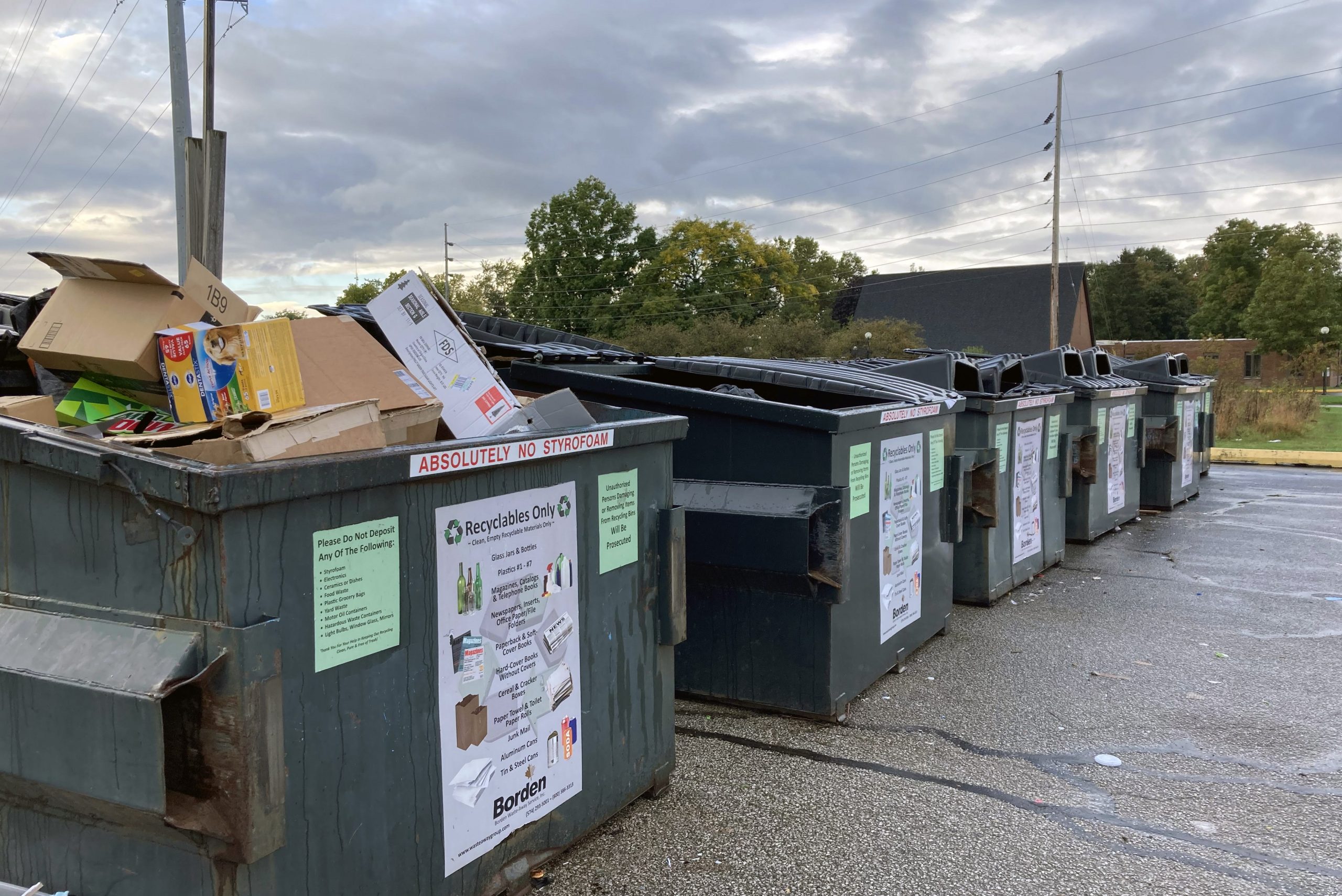Despite the many carefully-labeled recycling receptacles scattered around campus, understaffing at the Physical Plant and improper disposal of recyclable products has led to almost all of Goshen College’s recyclable materials being thrown away with the trash.
One place where the lack of recycling is noticeable this year is in Java Junction. The blue recycling bin in Java Junction is gone, and in its place is a traditional black trash can.Christian Saleh, a student supervisor at the coffee shop, was surprised by the change when he returned to campus after the summer. But he understands why the switch was made.
The replacement “is actually a better representation of what was being thrown in there,” Saleh said. The recycling bin received more food and other waste than recyclable materials.
A senior accounting major with minors in sustainability management and business, Saleh is the student co-chairman for the college’s Sustainability Committee.
“For how green our campus strives to be,” he said, “we are still falling behind tremendously when it comes to how much we recycle.”
The Goshen College campus is equipped with an array of recycling options.
For materials like plastics, paper, cardboard and aluminum, there are blue recycling bins inside of every building as well as green and brown bins outside. A community recycling drop-off station is located on the south side of College Mennonite Church and there is a collection site for styrofoam behind the Physical Plant. For those wanting to dispose of electronic appliances, a collection site is located in the basement of the Union building.
With all these options available, why doesn’t the campus recycle more?
To Steve Shantz, systems supervisor and EMS coordinator for the campus, the answer is clear: students and employees at Goshen College don’t know about many of these resources and don’t know how to use them properly.
“Don’t put your food trash with your plastic!” Shantz said.
People do occasionally throw things in recycling bins that shouldn’t be there. Stephanie Burkholder, the lead custodian for the church facilities, often finds leftover pizza and containers with food from the Leaf Raker in the recycling bins she empties.
But that’s not the whole story.
If Burkholder had more time, she could sort out the contaminants and still recycle the items that are left.
Because she usually doesn’t, Burkholder said, “I just end up dumping the whole bin in the trash.”
Outside, the situation is worse. The recycling and trash compartments of the green and brown receptacles near many buildings on campus are so notoriously mixed that the grounds crew doesn’t even check them before emptying both sides into the dumpster.
“We don’t recycle from those bins,” said Billy Easton, the assistant grounds supervisor who is in charge of emptying all of the bins a couple of times a week.
On Tuesday this week, Easton took his usual trash run to all of the priority bins on campus. He started at the Music Center, then looped around to the Octavio Romero Apartments, the dorms and the Leaf Raker, checking the contents of each side of the green and brown bins.
What he saw was surprising.
In one bin on the south side of Java Junction, an inventory of the recycling compartment revealed seven plastic cups, five disposable water bottles, one paper coffee cup, one full cup of Dunkin Donuts coffee, and a disposable mask. It wasn’t a perfect score, but 13 of the 15 items in there were supposed to be there (the trash side had one banana peel, one fruit snack wrapper and two paper cups from Java).
“To be honest with you,” Easton said, “the students are kind of following protocol until it gets full; we just throw it out.”
Burkholder took an inventory of the recycling bins she emptied that same day and came up with even better results. The recycling bin on the first floor of Wyse Hall contained only newspapers and glass bottles, as did the one on the third floor. The first floor of the library had only paper, and an office in that building had cardboard and paper shreds.
Compliance may vary between more academic locations and living or eating spaces, but for the most part, recycling bins are receiving recycling.
Understaffing on the grounds and custodial crews means workers like Burkholder and Easton don’t have the time or energy to meticulously sort each bin for contaminants.
“Doing recycling on campus takes a lot of effort on custodial’s part,” said Cynthia Good Kaufmann, interim facilities director. “And that’s not really what we hired them to do.”
But throwing away a whole bag of recycling just because a few items are contaminated, means that the negligence of some is undermining the efforts of those who do try to recycle.
Good Kaufmann hopes to hire someone to head up recycling on campus soon. Adding a position with recycling in its job description will help make sure it is a priority.
In the meantime, Good Kaufmann is experimenting with ways to get more things recycled. During move-in weekend, she set up bins for cardboard and Styrofoam behind the Yoder and Kratz residential halls.
“That was pretty successful,” she said.



